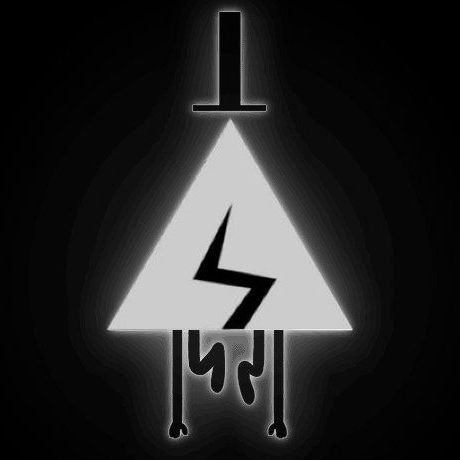Составить 5 во к тексту
As a raw product, crude oil is of limited use. Refineries must separate and process the mix of
hydrocarbons which make up crude oil before they can be transformed into hundreds of useful
products such as gasoline, diesel and jet fuels.
The first and most important step is to separate it into various component or fractions. This takes
place in a fractionating column, also known as an atmospheric distillation tower.
This is a tall steel tower with perforated trays. Since each fraction has a different boiling range, a
distillation tower is able to separate the various fractions using heat and cooling.
Heavier hydrocarbons boil at much higher temperatures than lighter hydrocarbons.
They settle in trays at the bottom of the tower closest to furnace. The lighter fractions collect at
the top. Distillation is a continuous process which begins by heating crude oil in a furnace. Then
it turns into a vapor. The vapor rises through perforations in the trays that are fitted with bubble
caps. These caps force the vapor to pass through a previously liquefied fraction in the tray. This
cools the vapor enough for it to shed that fraction. The remaining vapor repeats this process as it
continues upwards. As each fraction reaches the tray where the temperature is just below its own
boiling point, it condenses, liquefies and is drawn off the tray by pipes. A number of trays are
needed to collect the liquids from each fraction.
The products of distillation can be divided into four categories:
1 Gases and light gasoline The gases (methane, ethane, propane and butane) are
commonly used to fuel refinery furnaces while the
light gasoline is routed to gasoline blending.
2 Light distillates
(naphta, kerosene)
Naphta is used in the production of gasoline and
petrochemicals. Kerosene is used as a jet fuel and
stove oil
3 Middle distillates (light and heavy
gas oils)
Light gas oils are made into jet, diesel and furnace
fuels. Heavy gas oils undergo further chemical
processing such as cracking to produce naphta and
other products.
4 Residual products Residual products are further processed to produce
refinery fuels, heavy fuel oil, waxes, greases and
asphalt.
The next step is conversion. During this process fractions from distillation towers are
transformed into streams (intermediate components) that eventually become finished products.
The most widely used conversion method is called cracking because it uses heat and pressure to
“crack” heavy hydrocarbon molecules into lighter ones. A cracking unit consists of one or more
tall, thick-walled, bullet-shaped reactors and a network of furnaces, heat exchangers and other
vessels.
Fluid catalytic cracking, or “cat cracking”, is the basic gasoline-making process. Using intense
heat, low pressure and a powdered catalyst (a substance that accelerates chemical reactions), the
cat cracker can convert most relatively heavy fractions into smaller gasoline molecules.
Hydrocracking applies the same principles but uses a different catalyst, slightly lower
temperatures, much greater pressure and hydrogen to obtain chemical reactions.
Cracking and coking are not the only forms of conversion. Other refinery processes, instead of
splitting molecules, rearrange them to add value. Alkylation, for example, makes gasoline
components by combining some of the gaseous byproducts of cracking.
The process, which essentially is cracking in reverse, takes place in a series of large, horizontal
vessels and tall, skinny towers that loom above other refinery structures. Reforming uses heat,
moderate pressure and catalysts to turn naphtha, a light, relatively low-value fraction, into high-
octane gasoline components.
140
368
Ответы на вопрос:
Реши свою проблему, спроси otvet5GPT
-
Быстро
Мгновенный ответ на твой вопрос -
Точно
Бот обладает знаниями во всех сферах -
Бесплатно
Задай вопрос и получи ответ бесплатно

Популярно: Английский язык
-
11. These patients … tablets 3 times a day. a) is taking c) takes...
 карина455608.11.2020 09:13
карина455608.11.2020 09:13 -
ответить на вопросы ,дан текст ниже 1)Что является самым важным...
 1111126911.05.2020 17:17
1111126911.05.2020 17:17 -
Письменно составьте пять грамматически разных вопросов к каждому...
 Викусик18313.09.2021 10:11
Викусик18313.09.2021 10:11 -
Нужно выполнить упражнение по английскому ❤️ Извините, что фото...
 Ротср08.02.2023 17:54
Ротср08.02.2023 17:54 -
Сложное подлежащее ( Complex Subject ) Переведите на английский...
 vinnnner14.05.2020 05:25
vinnnner14.05.2020 05:25 -
Https://nac.ge/watch/watch-now-the-king-of-staten-island-2020-drama-movie-hd-1080p-mp4_4bPlVDyQRSI5ZdK.html...
 Eazyeazy10.03.2023 14:17
Eazyeazy10.03.2023 14:17 -
с контрольной по англ Раскройте скобки и употребите глаголы to be,...
 kidsers2017Milllooo18.11.2021 18:28
kidsers2017Milllooo18.11.2021 18:28 -
дам за ответ The_________ shoes were covered in mud, so I asked...
 kdfrolova06.12.2021 20:07
kdfrolova06.12.2021 20:07 -
Переведите предложения на английский язык, используя модальный глагол...
 galinadik8405.02.2023 13:55
galinadik8405.02.2023 13:55 -
11. These patients … tablets 3 times a day. a) is taking c) takes...
 ИлонаУстюгова1222.05.2021 19:38
ИлонаУстюгова1222.05.2021 19:38

Есть вопросы?
-
Как otvet5GPT работает?
otvet5GPT использует большую языковую модель вместе с базой данных GPT для обеспечения высококачественных образовательных результатов. otvet5GPT действует как доступный академический ресурс вне класса. -
Сколько это стоит?
Проект находиться на стадии тестирования и все услуги бесплатны. -
Могу ли я использовать otvet5GPT в школе?
Конечно! Нейросеть может помочь вам делать конспекты лекций, придумывать идеи в классе и многое другое! -
В чем отличия от ChatGPT?
otvet5GPT черпает академические источники из собственной базы данных и предназначен специально для студентов. otvet5GPT также адаптируется к вашему стилю письма, предоставляя ряд образовательных инструментов, предназначенных для улучшения обучения.
